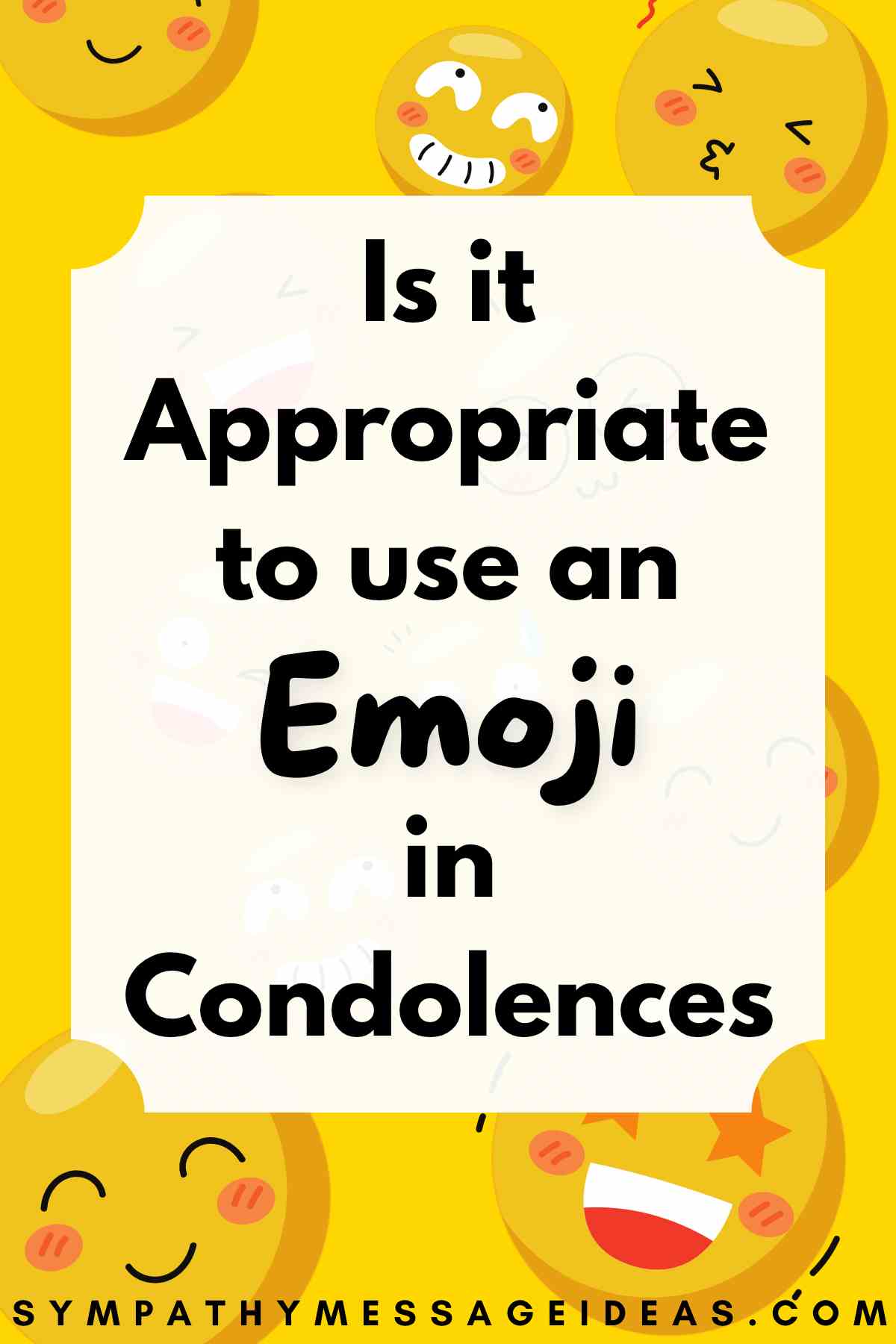When someone we care about passes away it’s natural for us to want to reach out. We want to offer as much comfort and support to the grieving family and friends as possible.
And while finding the right words for our condolences is hard enough, there’s also other things to worry about. Specifically, is it appropriate to use an emoji when expressing sympathy for someone’s loss?
The short answer is no. An emoji is mostly used in a fun and unserious way. Including one or more emojis as part of a condolence message could be seen as insensitive and making light of the grief the bereaved is going through.
There may be certain situations where it could be appropriate to use an emoji. But they will be few and far between. So if you’re unsure it’s definitely better to avoid using one.
For a closer look at using emojis, the time when it might be appropriate to use them in condolences as well as tips for using them then keep reading.
The Purpose of Thoughtful Condolences
It’s worth looking at the purpose of offering condolences. As it will play an important part of understanding whether emojis are appropriate.
A message of sympathy serves to:
- Express sincere empathy, compassion and solidarity with the bereaved during an agonizing time.
- Offer kindness, care and support to help with the intense grief they are experiencing.
- Honor the memory of the deceased and acknowledge their life and legacy.
So condolences should have a serious and respectful tone. They should provide comfort to the bereaved in their sorrow and show people are thinking of them.
Having a human connection through a sympathy card or message of condolence can be very meaningful to those working through profound loss.
Why Emojis Could Appear Insensitive
Given the deep anguish that accompanies bereavement it’s not hard to see how an emoji could seem dismissive or insensitive when included in condolences.
Emojis are by their very nature lighthearted and casual. Which is the exact opposite of the tone you should be taking when sending a message to someone grieving.
A bright and cheerful emoji in particular could trivialize feelings of profound loss. All it will do is undermine the sincerity and meaning of your words.
And up until recently emojis didn’t even exist. We managed to convey our sympathy and condolences perfectly well without them. So they’re hardly a necessity.
It’s best to stick with traditional, heartfelt condolences that have avoided using emojis altogether. Some thoughtful words will be more than enough.
Situations Where Emojis May Be Suitable
There are certain special situations where an emoji might potentially be appropriate in condolences. For example:
- If the deceased frequently used emojis themselves in life and relationships.
- Alongside text, to warmly highlight positive memories honored by the bereaved.
- To convey affection and a degree of lightheartedness fitting for the close relationship.
So if you’re sending a message to close friends or family members an emoji here and there may fit with the deceased’s colorful personality or preferences.
But be careful. You will need to be absolutely sure an emoji will be appropriate.
If you get it wrong you will cause offence and show yourself to be, albeit unintentionally, insensitive to the grief they are going through.
Tips for Using Emojis Respectfully
If you do decide to gently use an emoji in your condolences please keep these few things in mind:
- Use them sparingly and selectively to avoid appearing dismissive of feelings.
- Avoid over the top silly or playful emojis that don’t fit with grief and grieving.
- Place emojis carefully alongside text rather than using them on their own.
- Consider the bereaved person’s personality and preferences as well.
The most important thing is to ensure any emojis do not undermine the main aim of your message, which should be to console and support the bereaved.
Alternatives to Emojis
There are better choices than an emoji if you want to include more than words. Some additional visual elements that can wood well as part of a sympathy message might be:
- A favorite, poignant photo of the deceased that honors their memory will always work well.
- An illustration or artwork of the deceased can be just as effective as a photo.
- Simple, classic bereavement symbols like a heart, dove or angel.
Whatever you choose to do, remember: your condolences should offer comforting words and support to those going through the process of grieving.
Emojis may (and I empathize “may”) play some role at times. But take the utmost care in using them. Or simply avoid them if you are in any doubt.
The priority is comforting those suffering the loss. And really your words are going to be the only thing that can do that.


